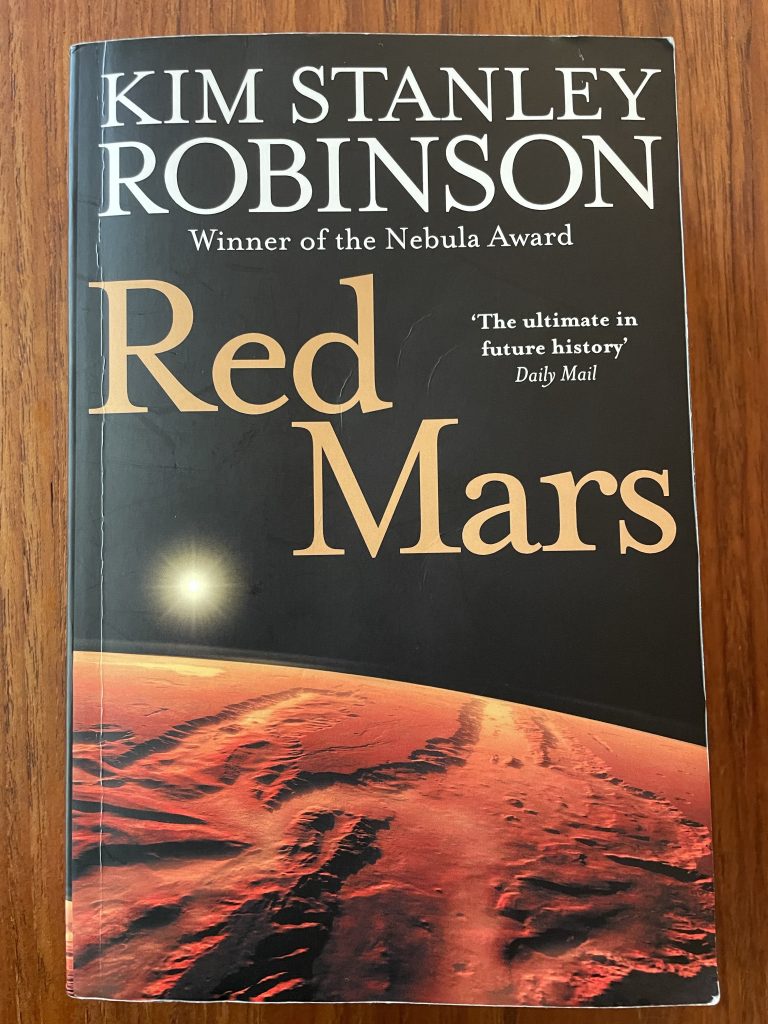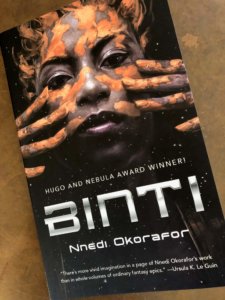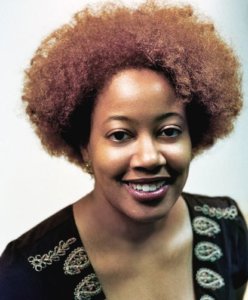Posts Tagged ‘Nebula Award’
RED MARS, by Kim Stanley Robinson, A No-Spoiler Review of the Classic Scifi Novel
The Short Review
5 reasons RED MARS is a must-read for the scifi fanatic and anyone remotely interested in planetary geology:
- RED MARS is a KSRobinson classic, published in 1992 and winner of the Nebula and the first of his acclaimed Mars Trilogy
- The story imagines life on Mars in a way that feels scientifically viable and compelling, therefore relevant to the current and growing conversation around Mars exploration
- Scientists are the narrators of this story. They are also the heroes, sometimes the villains, the problem solvers and the work horses. I was especially drawn to the “builder” character, Nadia
- The planetary geology content, naturally integrated into the story, is breathtakingly fun
- Despite being over 170K words long, KSR does not get bogged down in the “how would that ever be possible” science scenarios, but drives the story forward through characters and the politics that pressure a budding Martian community

The Longer Review
RED MARS tells the story of the first 100 scientists sent to Mars by a multi-national Earth entity called UNOMA, United Nations of Martian Affairs. The story PG-13 (for some sexual content) follows about 10 of those scientists closely, though many others are referred to and are part of the action in direct and indirect ways. The novel is broken up into eight parts and each of the parts has a different primary narrator. I do think Robinson’s choice on point of view works in a novel this long, adding a level of complexity and depth to the very audacious idea that Mars might be “tamed” by human beings. Robinson plays with themes around the idea that really smart people might be able to build a better civilization from scratch, and form some kind of utopia, but does not make the task easy on the idealogues within his story.
Various characters, all of whom are scientists in one discipline or another, give voice to ideas of alternative governing and living environments. The sharing of abundant resources is the initial reality for the first 100, but eventually, when new groups arrive on Mars, the corporations who have funded the exploration and building, come calling for the planet’s vast natural resources.
The conflict that arises is somewhat predictable and draws out the best and worst of the people in charge who are trying to manage a fragile, but quickly expanding human presence on Mars.
Meanwhile, Earth is falling into total chaos. Robinson does not spend any time showing the reader Earth itself, but shows it via news stories viewed by the inhabitants of Mars. Earth’s chaos is also a reason why many thousands of migrants are streaming to the new world. Robinson does lean left in his politics (proudly so) and sees corporate giants as the villain, though the villain is also amorphous in the story. Robinson’s ideas don’t come across as preachy to me. He’s a deep thinker and a thoughtful writer, so he understands the grittiness of governing and the probable impossibility of building that utopia even if one does start with 100 brilliant scientists.
Many science fiction readers will not mind the length of RED MARS, but at times, I confess to being a bit bored and wondered…Where is this story going? However, I did stick it out and the payoff was decent. It stands alone as a novel, without the kind of cliffhangers that drive you to the second book. Will I read the next two books in the trilogy? Probably yes, but not this summer.
THE CALCULATING STARS, A No Spoiler Review of the Novel:
THE CALCULATING STARS, by Mary Robinette Kowal
A Short Review
I highly recommend reading or listening to this novel. Below are 4 reasons why I loved it…
- Lots of dynamic female characters, told in first person by a female pilot/mathematician
- Well-written prose, making it easy to read and enjoy
- The characters are well drawn and realistic, despite the fact that they’re intellectual superstars
- It portrays a healthy marital relationship (for once!). Sometimes, you just want the husband to not be a jerk, and in this novel, that is absolutely the case. *Elma and her husband also enjoy a dynamic sex life, which is why I give the book a PG-13 rating. Nothing terribly graphic, but there are a few heated encounters between husband and wife.
THE CALCULATING STARS is a part of the Lady Astronaut Series, by Kowal, which includes a short story, The Lady Astronaut of Mars and another novel, The Fated Sky.
These stories emerge in an alternative history of Earth, focusing on the US Space program after a meteor plunges into the ocean off the coast of Maryland. The disaster strikes on March 3, 1952 and kills nearly all of the inhabitants of the Eastern Seaboard, including DC and most US government officials.
Kowal quickly frames the narrative from here. A meteorite of this magnitude will change the climate of the Earth forever. It is a matter of time (5-10 years) before the Earth becomes uninhabitable. Nations must work together to relocate to another planet and on this front, women have to be trained alongside men, don’t they? That is the question around which the book pivots. This is the 1950s and not only does racism rear its head in the space program, so does sexism.
The main character, Elma York narrates the story in first person, and I liked her as narrator. She is ambitious and brilliant, but flawed enough to give the story tension.
Elma is not only a renowned mathematician, she is also an experienced pilot, having flown for the WASPs in WWII. Her husband becomes the lead engineer of the new space program. Elma is recruited as one of the computers, seemingly an acceptable “role” for women in the new space venture (think Hidden Figures), but her real hope is to convince the NACA bosses that women are just as able to fly into space as men.
THE CALCULATING STARS won the 2019 Nebula for Best Novel, the 2019 Locus Award for Best Scifi Novel, the 2019 Hugo for Best Novel and the 2019 Sidewise Award for Alternate History.
Click here to purchase THE CALCULATING STARS
BINTI, A Review Without Spoilers
BINTI, by Nnedi Okorafor, is a novella about a young woman from a desert tribe on Earth. Her people are called the Himba people and they make a vital piece of technology on Earth called an astrolabe. Binti is the name of the main character. The story, told in first person, begins with Binti climbing aboard a transporter that is taking her to a launch port, then onward to Oomza Uni. Oomza Uni is a university on a distant planet where Binti will have the opportunity to study mathematics with the best and brightest from all over the universe. She is the first of her people to be admitted, so there is the sense of her achieving a great honor. However, she and we (the reader) clearly understand how high the cost is as she leaves her tribe and family behind, potentially forever.
Binti is a 16-year-old, but this book is not a YA book according to the author. However, the back cover of the paperback calls it a “coming of age story”, which might put it in that genre for some. I believe it will appeal most to the middle grade and YA audience, with some degree of PG-13 gore (one incident).
The Novella, BINTI, won the Hugo award in 2016 and the Nebula in 2015 for best novella.
To order BINTI, click here.
What I enjoyed about BINTI.
- Sometimes, a novella is just right. There aren’t many around, but novellas can be a satisfying reading experience. To get through a story in one long sitting or two or three short sittings is a lovely thing. Also…light-weight, perfect for a 2-hour plane ride.
- The main character is unique and different than a typical caucasian protagonist. Her culture will feel different to many readers. Okorafor has ties to Nigeria and I am guessing that her place of origin impacts the writing of this world. That world is powerful in many respects in how it anchors the character’s identity. For the sci-fi reader who loves to enter into new cultures and worlds, this story will scratch an itch.
- Decent tension to keep the reader going.
- A satisfying introduction to an author’s burgeoning world. (two novellas follow this one)
It’s a bargain to order the complete trilogy. To do so, click here.
What annoyed me about BINTI and makes me hesitant to give it the highest review…
- Somewhat shallow character development. This is the negative of the novella format…it’s a challenge to develop the characters deeply.
- The conflict is resolved too easily.
- There are wonderful characters here, but I found the writing a bit underwhelming. My exposure to literary fiction makes me a snob sometimes…the writing won’t be a problem for most readers.
- The tech is more like magic in this story than science…or might as well be. I’m wondering if it will be explained in the next novella in a sciency way or not?
Five Female Science Fiction Authors You Need to Read ASAP
I write this post in honor of International Women’s Day and I hope it might spur you to pick up a novel or download an audiobook that you might not have read without a little urging. You won’t be disappointed!
With that said, here’s the list:
- Octavia Butler
- Ursula K. Le Guin
- Margaret Atwood
- N.K. Jemisin
- Julian May
Octavia Butler, author of KINDRED, passed away in 2006. She was one of a handful of women to win multiple Nebula and Hugo Awards, as well as the Arthur C. Clarke Award. If you’re starting out and want a great taste of Butler’s writing, order or pickup BLOOD CHILD AND OTHER STORIES The novelette, BLOOD CHILD, won both the Nebula and the Hugo. If you’re a fan of graphic novels, try this version of KINDRED: GRAPHIC NOVEL
Ursula K. Le Guin, author of THE LEFT HAND OF DARKNESS passed away last year. Many love her for her fantasy, but she is perhaps chief among our mothers in the pantheon of many fathers who have written the most important science fiction in the last 40 years. She was the first woman to win a Nebula award and a Hugo, for THE LEFT HAND OF DARKNESS. My review of the novel is here. Much adored by her fans is the THE EARTHSEA CYCLE novels that were intentionally targeted at the young adult audience (Le Guin was encouraged by her publisher to do so.)
Margaret Atwood, author of THE HANDMAID’S TALE, for which she won a Nebula award, The Arthur C. Clarke Award and the Booker Prize, has a contemporary fan base since her novel was adapted to television by HBO. That novel is worthy of your attention, but so are many of her others, like ORYX AND CRAKE, the first in the The MaddAddam Trilogy.
N.K. Jemisin is blowing the socks off the scifi community with her brilliant story-telling and characters that breathe prophetic. The Broken Earth Trilogy belongs on every scifi fan’s shelf. She is the first author in the history of the Nebula to win three awards in three consecutive years. For a dip into her writing, try some of her short stories, many of which are award-winning and/or brilliant in their own right. This collection is what you need. HOW LONG ‘TIL BLACK FUTURE MONTH: STORIES
Julian May passed away last year and will be the most obscure recommendation I make. I do so because I recently discovered her and feel her scifi to be completely wonderful, different and imaginative in a way I had not expected. She’s written a series called The Saga of Pliocene Exile which is a riveting tale with fantastic and memorable characters. I reviewed THE MANY COLORED LAND in the Fall. You can read the review here.
Women bring a unique voice to the science fiction landscape and they have mostly been welcomed by those who love the genre. They are still out-numbered on the shelves of your local bookstore and it’s good to be reminded of the best.
Who are your favorite female authors within the genre? I’d love to hear who you love.






